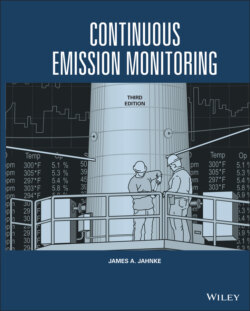Читать книгу Continuous Emission Monitoring - James A. Jahnke - Страница 142
Multipath Gas Cells
ОглавлениеInfrared and ultraviolet spectrometers, gas filter correlation spectrometer, Fourier‐ transform infrared spectrometers, and systems using tunable lasers make use of the Beer–Lambert law, either in a simple logarithmic relationship, or more complicated expressions. One characteristic in these instruments in which light energy is absorbed by targeted molecules is that when more molecules absorb the light energy, the greater will be the difference between the incident light intensity Io and the signal intensity, I. For low concentrations or small absorption coefficients, an instrument may not be sensitive enough to provide accurate measurements. In particular, weaker absorption bands in the near infrared make it difficult to apply tunable diode lasers for gas monitoring unless the pathlength is increased.
By increasing the measurement pathlength, more opportunities are provided for light energy to be absorbed before reaching the detector. There are several ways of doing this; the simplest is to just increase the length of the measurement cell. This was attempted in some early CEM instruments, but led to bulky, problem‐prone installations, most of which have since been replaced. Other approaches include using multipath cells (such as White and Herriott cells), using high sensitivity, ultralong pathlength, absorption techniques such as cavity ring‐down spectroscopy (CRDS) and integrated cavity output spectroscopy (ICOS), or by measuring across the stack in a double‐pass in‐situ system instead of using a sample cell in an extractive system analyzer.
